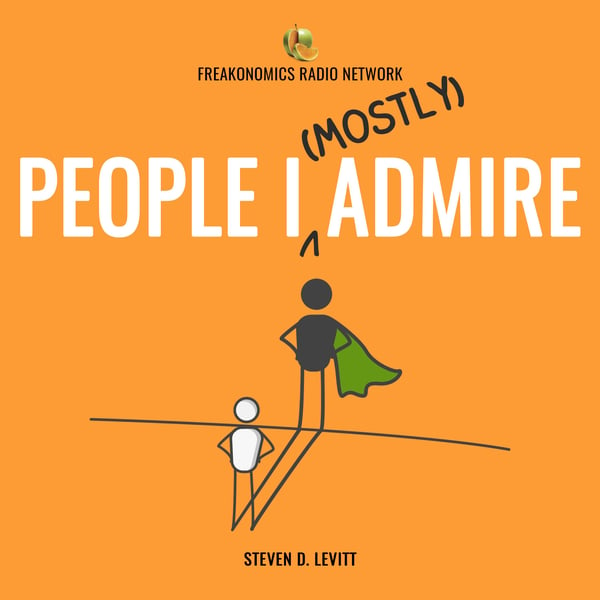141. The Language of the Universe
People I (Mostly) Admire
Freakonomics Radio + Stitcher
4.6 • 1.9K Ratings
🗓️ 28 September 2024
⏱️ 48 minutes
🧾️ Download transcript
Summary
Transcript
Click on a timestamp to play from that location
| 0:00.0 | My guest today Ken Ono is a mathematics professor at the University of Virginia, |
| 0:08.2 | but what makes him unusual is how we apply math outside of academia. |
| 0:13.0 | His math knowledge got him the job of associate producer for a major Hollywood motion picture. |
| 0:18.0 | And more recently, he's been helping swimmers to make the Olympic podium. |
| 0:23.6 | How do you optimally streamline your body so that the force you generate |
| 0:28.7 | propels you through the water as efficiently as possible? |
| 0:32.3 | That's a math problem. And it's a math problem with many different |
| 0:35.3 | parts. |
| 0:40.3 | Welcome to people I mostly admire with Steve Levitt. |
| 0:47.0 | On a day-to-day basis, Ken Studies highly abstract mathematical topics you've probably never heard of, like integer partitions and modular forms. |
| 0:56.0 | I want to start the conversation by seeing if he can explain some of his crazy theorems in an accessible way. I'm also curious how someone who thinks in such |
| 1:05.8 | an abstract way defines math. |
| 1:11.6 | So can't So Ken, one result that you've proven and to an outsider I have to say it's a |
| 1:20.4 | strange result. You've proven that every odd number greater than 2,719 can be written in the form |
| 1:31.7 | X squared plus Y squared plus 10 Z squared for some |
| 1:37.0 | integers X YZ. It is a very weird theorem. It actually is a theorem that is dependent on what's called the |
| 1:45.1 | Riemann hypothesis, which is one of the million dollar Clay Millennium Prize problems. |
| 1:51.4 | It's a polynomial in XY, Y, Z. You know how to plug in numbers for X, Y, Z, and you can get larger and |
| 1:57.2 | larger numbers. What our theorem says, if for any odd |
| 2:05.0 | odd number bigger than 2, 319, |
| 2:08.8 | then the Riemann hypothesis would be false. |
| 2:11.3 | And you'd get a million dollars. |
... |
Please login to see the full transcript.
Disclaimer: The podcast and artwork embedded on this page are from Freakonomics Radio + Stitcher, and are the property of its owner and not affiliated with or endorsed by Tapesearch.
Generated transcripts are the property of Freakonomics Radio + Stitcher and are distributed freely under the Fair Use doctrine. Transcripts generated by Tapesearch are not guaranteed to be accurate.
Copyright © Tapesearch 2025.

